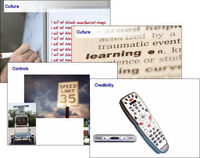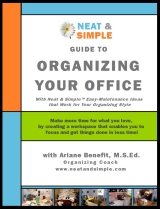 I do a lot of presentations in my line of work, and am always looking for ways to improve. A while back, I read the book "Beyond Bullet Points," by Cliff Atkinson, which provides a process that helps you dramatically increase the impact of your presentations. As the name implies, you get away from using bullet points in PowerPoint and use a storytelling approach to convey your points.
I do a lot of presentations in my line of work, and am always looking for ways to improve. A while back, I read the book "Beyond Bullet Points," by Cliff Atkinson, which provides a process that helps you dramatically increase the impact of your presentations. As the name implies, you get away from using bullet points in PowerPoint and use a storytelling approach to convey your points.
While I read the book a long time ago, I finally bit the bullet (so to speak) and decided to deliver my first presentation using this technique a couple of weeks ago in Las Vegas. I was nervous about trying this totally different approach, as I was presenting to a bunch of internal auditors at a conference, and there was considerably less hard data on my slides than usual.
I'm happy to say the presentation went quite well, and I had the chance to tighten up the story for another rendition of the presentation this week in Toronto.
Why am I such a big fan of this approach? As the book says, if your slides say everything you want to cover then why do they need you to show up? Also, the message becomes more memorable - and much more poignant - if you display mastery of your topic by adding personal stories and interpretation to the message.
Beyond Bullet Points provides a very straight-forward approach to organizing and expanding your presentation content using a
screenplay approach. You approach your presentation like you are writing a script, and you create levels of detail to fill 5, 15, 30, and 60 minutes. This is great because it gives you an effective way to tailor your presentation to fit the time allotted without feeling rushed and, most importantly, without leaving out major points.
Once you have your script created, you use a then storyboard process to build effective visuals to support your story. Since there is so much imagery involved, you may find yourself struggling to find good images to use on your slides. I used a combination of photos I took, a few I found on Google, and some that I found in a photo clip art collection from Hemera that I bought on Amazon.
The book also provides links to a web site where you can download free templates (in Word and Excel) to help you build your script, and a storyboard slide template for PowerPoint. These templates make it very easy to organize your thoughts and get into this new presentation process.
If you create and deliver presentations with any sort of frequency, I highly recommend you try the Beyond Bullet Points approach.
Read More On a flight this morning, I was chatting with a gentleman sitting next to me. He shared a recent learning (he called it a "guidepost") he adopted recently. I thought it was interesting:
On a flight this morning, I was chatting with a gentleman sitting next to me. He shared a recent learning (he called it a "guidepost") he adopted recently. I thought it was interesting:

 I'm privileged to be a part of the
I'm privileged to be a part of the 
 I say it's like a workshop, because the document is actually a workbook designed so that you can print it out and write our your thoughts and answers in the book. You can then use the workbook throughout the year to remind you what you identified as important, which things you want to achieve, etc. It's generally known that writing things down helps make ideas more "real" in your brain, and I found that writing my answers down also felt good - like I was taking concrete steps to plan for 2008.
I say it's like a workshop, because the document is actually a workbook designed so that you can print it out and write our your thoughts and answers in the book. You can then use the workbook throughout the year to remind you what you identified as important, which things you want to achieve, etc. It's generally known that writing things down helps make ideas more "real" in your brain, and I found that writing my answers down also felt good - like I was taking concrete steps to plan for 2008.